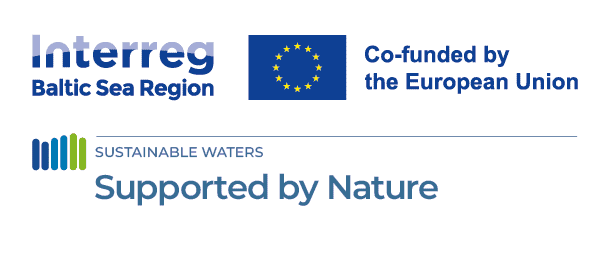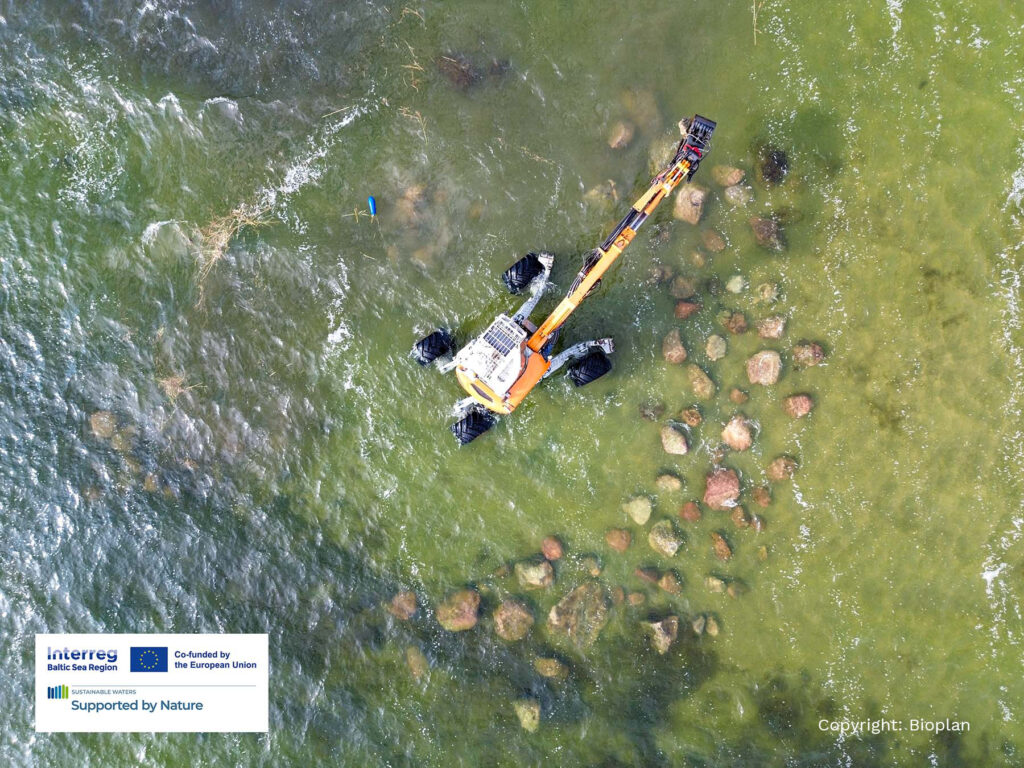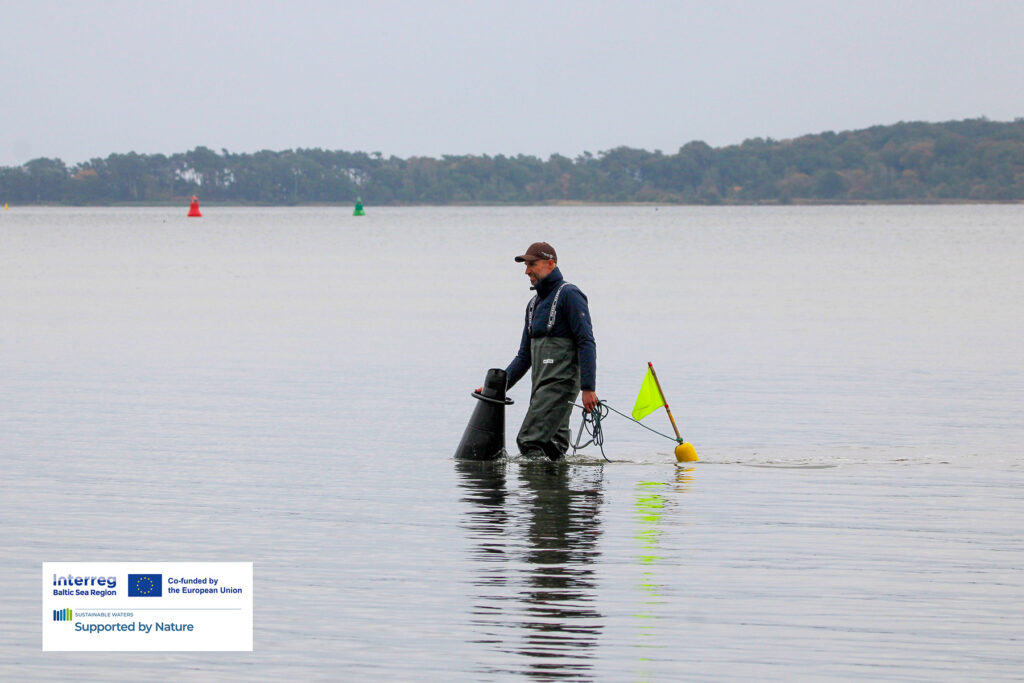
Restoration of a Natural Reef in the Southeast Rügen Biosphere Reserve
18 November 2025

Photo: Bioplan
A Major Step Toward Restoring the Underwater Landscape
Around 640 tons of natural stones have been placed in the Greifswald Bodden near the village of Neuendorf, marking a milestone in the revival of reef structures that once characterized the area. The stones were sourced locally through cooperation with regional farmers, who provided stones collected from their fields.
Photo: Southeast Rügen Biosphere Reserve
How the Reef Was Rebuilt
A specialized company deployed the stones, which have edge lengths ranging from 30 cm up to one meter, across an area of about 1,400 square meters to achieve a bottom coverage of approximately 50 percent. The goal of this measure is to reestablish natural reef structures that were lost in the past due to stone fishing. Stone fishing is the historical removal of stones from the sea, primarily for use as building material. Old sources confirm that this location served multiple times as a removal site.
Photo: Southeast Rügen Biosphere Reserve
Ministerial Recognition and Ecological Value
Minister Dr. Backhaus praised the initiative:
“The Southeast Rügen Biosphere Reserve proves once again that it is also a model region in the field of nature conservation. This is the first reconstruction of a reef in Mecklenburg-Vorpommern that was lost due to stone fishing. We are thereby gaining important experience for future projects of this kind along the entire Baltic Sea coast. At the same time, this project is an outstanding example of how nature conservation can be advanced across borders through international cooperation within the framework of Interreg.
The reconstructed reef is primarily intended to support the settlement and promotion of Bladderwrack (Fucus vesiculosus) in the future. Its sharp decline is attributed, among other things, to the massive removal of stones. In general, rocky seabeds in the Baltic Sea are home to a particularly species-rich flora and fauna. This underwater landscape should also be made tangible for the Biosphere Reserve’s educational work.”

Photo: Bioplan
See More in the Media
The northern German TV program Nordmagazin has highlighted the restoration of the reef near Lauterbach on Rügen.
Watch the feature here: Nordmagazin: Reef Reconstruction near Lauterbach on Rügen (in German)

Photo: Southeast Rügen Biosphere Reserve







